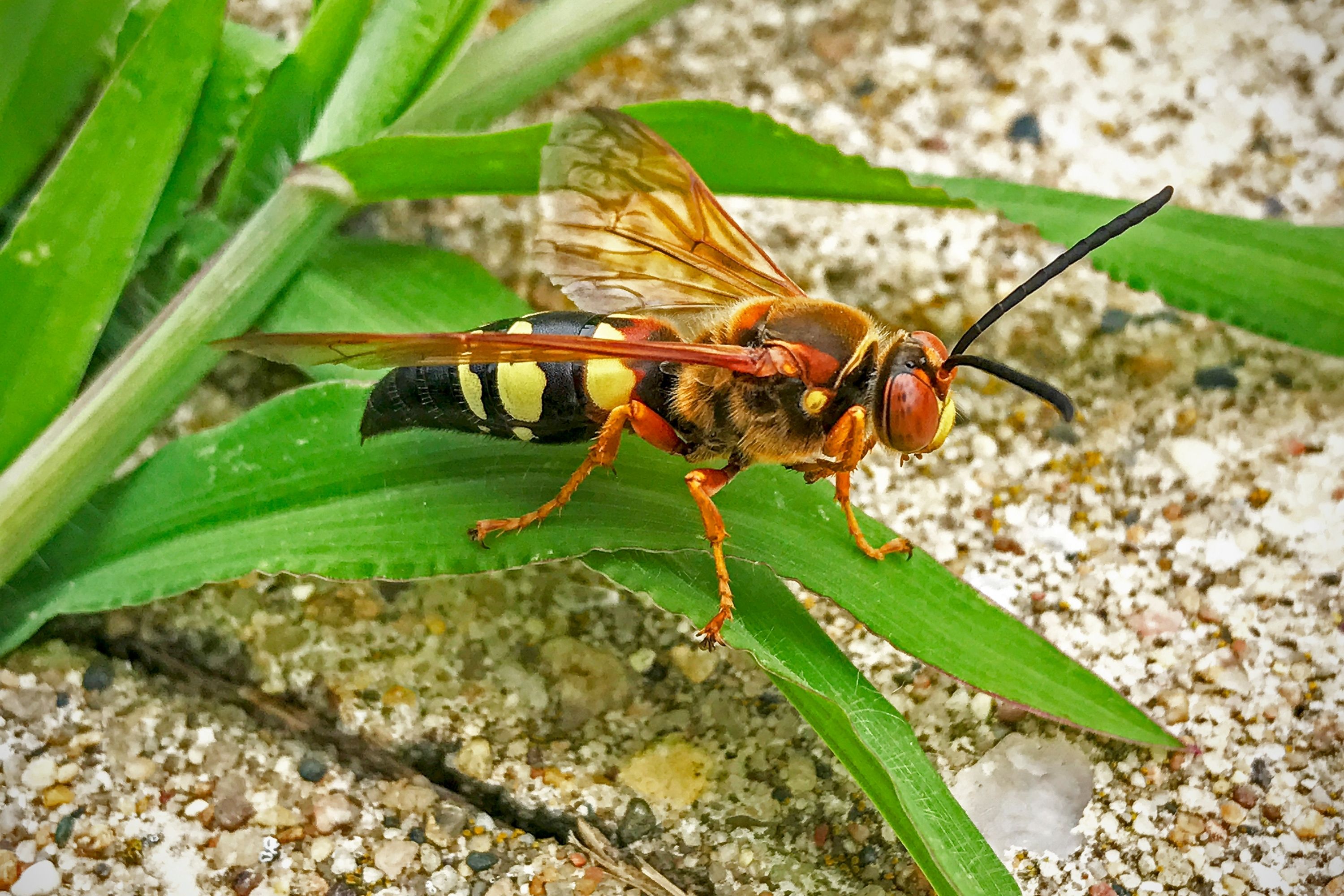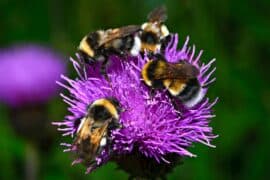Eastern cicada killer
(Sphecius speciosus)

Description
Sphecius speciosus, often simply referred to as the cicada killer or the cicada hawk, is a large, solitary digger wasp species in the family Crabronidae. The name may be applied to any species of crabronid that preys on cicadas, though in North America, it is typically applied to this species, also referred to as the eastern cicada killer in order to further differentiate it from the multiple other examples of related wasp species. Sometimes, they are called sand hornets, although they are not hornets, which belong to the family Vespidae. This species can be found in the Eastern and Midwest U.S. and southwards into Mexico and Central America. They are so named because they hunt cicadas and provision their nests with them. Cicada killers exert a measure of natural control on cicada populations, and as such they may directly benefit the deciduous trees upon which the cicadas feed. The most recent review of this species' biology is found in the posthumously published comprehensive study by noted entomologist Howard Ensign Evans. Adult eastern cicada wasps are large, 1.5 to 5.0 cm (0.6 to 2.0 in) long, robust wasps with hairy, reddish, and black areas on their thoraces (middle parts), and black to reddish brown abdominal (rear) segments that are marked with light yellow stripes. The wings are brownish. Coloration superficially resembles that of some yellowjacket and hornet species. The females are somewhat larger than the males, and both are among the largest wasps seen in the Eastern United States, their unusual size giving them a uniquely fearsome appearance. European hornets (Vespa crabro) are often mistaken for eastern cicada killers, though at about 3.5 cm (1.4 in) long, they are smaller than the largest cicada killers. The males are smaller than the females because they are not given as much larval food; since females must carry the cicadas they have killed to a burrow for nesting, they benefit from being larger, and are given more food as larvae Solitary wasps like the eastern cicada killer are very different in their behavior from the social wasps such as hornets, yellowjackets, or paper wasps. Cicada killer females use their stings to paralyze their prey (cicadas) rather than to defend their nests; unlike most social wasps and bees, they do not attempt to sting unless handled roughly. Adults feed on flower nectar and other plant sap exudates.
Taxonomic tree:







